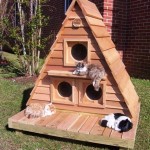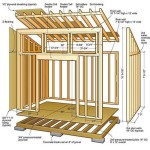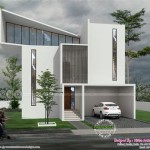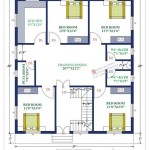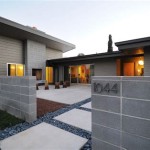Arch Design House Plans are detailed blueprints that outline the architectural design of a house featuring arched elements. These plans serve as a roadmap for the construction process, providing precise instructions on the placement, dimensions, and materials of archways and other architectural details.
Arch Design House Plans are essential for ensuring the structural integrity, aesthetic appeal, and functionality of a home. They help architects and builders visualize the finished product and avoid costly errors during construction. For instance, plans that incorporate arches over entryways, windows, or interior passageways require meticulous detailing to ensure proper support and load distribution.
In the following sections, we will delve into the key components of Arch Design House Plans, exploring the various types of arches, their structural considerations, and the benefits of incorporating them into home designs.
Here are 10 important points about Arch Design House Plans:
- Define arch styles
- Determine arch dimensions
- Specify arch materials
- Consider structural support
- Integrate arches into design
- Enhance aesthetic appeal
- Maximize natural light
- Improve ventilation
- Create a sense of grandeur
- Increase property value
Arch Design House Plans offer a multitude of benefits, from enhancing the aesthetic appeal of a home to increasing its structural integrity and functionality.
Define arch styles
Arches are architectural elements that span an opening and support the weight above them. They come in a variety of styles, each with its own unique characteristics.
The most common arch style is the round arch, also known as the semicircular arch. It is characterized by its curved shape, which resembles a half circle. Round arches are often used in traditional and classical architecture.
Another common arch style is the pointed arch, also known as the Gothic arch. It is characterized by its pointed shape, which creates a more dramatic and vertical emphasis. Pointed arches are often used in Gothic and medieval architecture.
Segmental arches are characterized by their flattened shape, which resembles a segment of a circle. They are often used in modern and contemporary architecture, as they provide a more streamlined and minimalist look.
Parabolic arches are characterized by their curved shape, which resembles a parabola. They are often used in bridges and other structures where strength and stability are important.
Determine arch dimensions
The dimensions of an arch are critical to its structural integrity and aesthetic appeal. The following factors should be considered when determining arch dimensions:
- Span: The span of an arch is the distance between its supports. The span determines the size and shape of the arch, as well as the materials that can be used.
- Rise: The rise of an arch is the vertical distance from the springing line to the crown. The rise determines the height and curvature of the arch.
- Thickness: The thickness of an arch is the distance from the intrados to the extrados. The thickness determines the strength and stability of the arch.
Once the span, rise, and thickness of an arch have been determined, the arch can be drawn to scale and its dimensions can be calculated. The following formula can be used to calculate the radius of an arch:
“`r = (s^2 + 4h^2) / 8h“`where:* r is the radius of the arch* s is the span of the arch* h is the rise of the arch
Once the radius has been calculated, the arch can be drawn using a compass or other drafting tool.
Paragraph after details
The dimensions of an arch can also be affected by the materials that are used. For example, stone arches are typically thicker than brick arches, and steel arches are typically thinner than concrete arches. The weight of the materials used must also be considered when determining arch dimensions.
Arch dimensions can have a significant impact on the overall design of a building. A well-proportioned arch can enhance the aesthetic appeal of a building and create a sense of harmony and balance. Conversely, an arch that is too large or too small can look out of place and disrupt the overall design of the building.
Specify arch materials
The materials used to construct an arch can have a significant impact on its strength, durability, and appearance. The most common materials used for arches include:
- Stone: Stone arches are strong and durable, and they can be used to create a variety of architectural styles. However, stone arches are also heavy and expensive to construct.
- Brick: Brick arches are less strong and durable than stone arches, but they are also lighter and less expensive. Brick arches are often used in residential and commercial buildings.
- Concrete: Concrete arches are strong and durable, and they can be used to create a variety of architectural styles. Concrete arches are also relatively inexpensive to construct.
- Steel: Steel arches are strong and lightweight, and they can be used to create a variety of architectural styles. However, steel arches are also more expensive than other types of arches.
When selecting a material for an arch, it is important to consider the following factors:
- Strength: The strength of the arch material is critical to its structural integrity. The arch material must be able to support the weight of the structure above it.
- Durability: The durability of the arch material is important for its long-term performance. The arch material must be able to withstand the elements and other environmental factors.
- Appearance: The appearance of the arch material is important for its aesthetic appeal. The arch material should complement the overall design of the building.
- Cost: The cost of the arch material is an important factor to consider. The arch material should be affordable and within the budget for the project.
Paragraph after details
Once the arch material has been selected, it is important to properly install the arch. The arch must be properly supported and anchored to ensure its structural integrity. The arch should also be sealed to prevent water damage.
Arch materials can have a significant impact on the overall design of a building. A well-chosen arch material can enhance the aesthetic appeal of a building and create a sense of harmony and balance. Conversely, a poorly chosen arch material can look out of place and disrupt the overall design of the building.
Consider structural support
Paragraph before list
The structural support of an arch is critical to its ability to safely bear the weight of the structure above it. There are a number of factors to consider when designing the structural support for an arch, including:
- The span of the arch: The span of an arch is the distance between its supports. The span of the arch will determine the size and strength of the structural support required.
- The rise of the arch: The rise of an arch is the vertical distance from the springing line to the crown. The rise of the arch will affect the strength and stability of the arch.
- The thickness of the arch: The thickness of an arch is the distance from the intrados to the extrados. The thickness of the arch will affect its strength and stability.
- The materials used to construct the arch: The materials used to construct the arch will affect its strength and durability. Stone arches are stronger and more durable than brick arches, but they are also heavier and more expensive. Steel arches are lighter and less expensive than stone arches, but they are not as strong or durable.
Paragraph after list
Once the factors above have been considered, the structural support for the arch can be designed. The structural support for an arch can take a variety of forms, including:
- Buttresses: Buttresses are vertical supports that are built against the sides of an arch to help support its weight. Buttresses are often used in Gothic architecture.
- Flying buttresses: Flying buttresses are arched supports that are built outside of the walls of a building to help support the weight of the arch. Flying buttresses are often used in Gothic architecture.
- Corbels: Corbels are brackets that are built into the walls of a building to help support the weight of an arch. Corbels are often used in Romanesque architecture.
- Tie rods: Tie rods are metal rods that are used to tie the two sides of an arch together and help prevent it from spreading. Tie rods are often used in modern architecture.
The type of structural support used for an arch will depend on the factors discussed above. It is important to consult with a structural engineer to design the structural support for an arch to ensure its safety and stability.
Integrate arches into design
Arches can be integrated into the design of a house in a variety of ways. One common approach is to use arches to create openings in walls, such as doorways and windows. Arches can also be used to create decorative elements, such as archways and niches. In addition, arches can be used to support structural elements, such as beams and columns.
When integrating arches into the design of a house, it is important to consider the overall style of the house. For example, round arches are often used in traditional and classical architecture, while pointed arches are often used in Gothic and medieval architecture. Segmental arches and parabolic arches are often used in modern and contemporary architecture.
It is also important to consider the scale of the arches in relation to the size of the house. Small arches can be used to create a delicate and elegant look, while large arches can be used to create a more dramatic and imposing look.
Arches can be integrated into the design of a house in a variety of ways. By carefully considering the style, scale, and placement of arches, it is possible to create a beautiful and unique home.
Paragraph after details
Arches can be used to create a variety of different effects in a house. For example, arches can be used to:
- Create a sense of grandeur and spaciousness
- Add a touch of elegance and sophistication
- Define different spaces within a room
- Create a focal point or draw attention to a particular feature
- Improve the flow of traffic through a house
Arches can be used in any room of a house, from the entryway to the living room to the kitchen to the bathroom. They can be used to create a variety of different looks, from traditional to modern to contemporary. With careful planning, arches can be used to create a beautiful and unique home that is both stylish and functional.
Enhance aesthetic appeal
Arches are a beautiful and versatile architectural element that can be used to enhance the aesthetic appeal of a house in a variety of ways. From traditional to modern, arches can be used to add a touch of elegance and sophistication to any home.
- Create a sense of grandeur and spaciousness
Arches can create a sense of grandeur and spaciousness in a room by drawing the eye upward and creating the illusion of height. This is especially effective in rooms with high ceilings, where arches can help to create a more dramatic and impressive space.
- Add a touch of elegance and sophistication
Arches are often associated with elegance and sophistication, and they can be used to add a touch of class to any home. Arches can be used to create a grand entranceway, to frame a fireplace, or to add a touch of detail to a kitchen or bathroom.
- Define different spaces within a room
Arches can be used to define different spaces within a room without the need for walls or partitions. This can be useful in open-plan living areas, where arches can be used to create distinct areas for different activities, such as a living area, dining area, and kitchen.
- Create a focal point or draw attention to a particular feature
Arches can be used to create a focal point in a room or to draw attention to a particular feature, such as a fireplace, a piece of art, or a window. This can be achieved by using a larger arch or by using an arch with a more decorative design.
Arches can be used to create a variety of different looks in a house, from traditional to modern to contemporary. By carefully considering the style, scale, and placement of arches, it is possible to create a beautiful and unique home that is both stylish and functional.
Maximize natural light
Arches can be used to maximize natural light in a house by creating larger openings for windows and doors. This can help to create a brighter and more inviting space, and it can also reduce the need for artificial lighting during the day.
- Larger windows and doors
Arches can be used to create larger windows and doors, which allows more natural light to enter a room. This can be especially effective in rooms that are north-facing or that have limited access to natural light. By using arches to create larger openings, it is possible to brighten up a room and make it feel more spacious.
- Windows and doors in unexpected places
Arches can also be used to create windows and doors in unexpected places, such as in corners or above doorways. This can help to create a more interesting and unique space, and it can also allow natural light to reach areas of the room that would not otherwise be lit. For example, an archway with a window above a doorway can allow light to enter a hallway or entryway, making it feel more welcoming and inviting.
- Arched skylights
Arched skylights can be used to bring natural light into a room from above. This can be a great way to brighten up a dark room or to add a touch of drama to a space. Arched skylights can be installed in a variety of shapes and sizes, so they can be customized to fit the needs of any home.
- Clerestory windows
Clerestory windows are tall, narrow windows that are placed high up on a wall. They can be used to bring natural light into a room without sacrificing privacy. Clerestory windows are often used in churches and other public buildings, but they can also be used in homes. Arches can be used to create clerestory windows that are both beautiful and functional.
By using arches to maximize natural light, it is possible to create a brighter, more inviting, and more energy-efficient home.
Improve ventilation
Arches can be used to improve ventilation in a house by creating openings that allow air to flow more freely. This can help to reduce the buildup of stale air and humidity, which can lead to a number of health problems. Arches can be used to create openings in a variety of places, including windows, doors, and walls.
- Arched windows
Arches can be used to create arched windows that allow air to flow in from multiple directions. This can be especially effective in rooms that are narrow or that have limited access to cross-ventilation. By using arches to create arched windows, it is possible to improve ventilation and create a more comfortable space.
- Arched doors
Arches can also be used to create arched doors that allow air to flow more freely between rooms. This can be especially effective in homes with open-plan living areas, where arches can be used to create a more fluid and airy space. By using arches to create arched doors, it is possible to improve ventilation and create a more comfortable and inviting home.
- Arched openings in walls
Arches can also be used to create arched openings in walls, which can allow air to flow between different parts of the house. This can be especially effective in homes with long hallways or in homes with multiple levels. By using arches to create arched openings in walls, it is possible to improve ventilation and create a more comfortable and healthier home.
In addition to the benefits listed above, arches can also be used to improve the overall aesthetic appeal of a house. Arches can add a touch of elegance and sophistication to any home, and they can be used to create a variety of different looks, from traditional to modern to contemporary. By carefully considering the style, scale, and placement of arches, it is possible to create a beautiful and unique home that is both stylish and functional.
Create a sense of grandeur
Arches can be used to create a sense of grandeur in a house by creating a more spacious and impressive space. This is especially effective in large rooms with high ceilings, where arches can help to draw the eye upward and create the illusion of height.
- Height and verticality
Arches can be used to create a sense of height and verticality in a room. This can be achieved by using tall, narrow arches or by using arches with a pointed or Gothic shape. Arches can also be used to create vaulted ceilings, which can add even more grandeur to a space.
- Scale and proportion
The scale and proportion of the arches in a house can also contribute to a sense of grandeur. Large, imposing arches can create a more dramatic and impressive space, while smaller, more delicate arches can create a more subtle and elegant look. It is important to choose the right scale and proportion of arches for the size and style of the house.
- Focal point
Arches can be used to create a focal point in a room or to draw attention to a particular feature, such as a fireplace, a piece of art, or a window. This can be achieved by using a larger arch or by using an arch with a more decorative design. Arches can also be used to create a sense of symmetry in a room, which can further contribute to a sense of grandeur.
- Natural light
Arches can be used to maximize natural light in a room, which can help to create a more bright and airy space. This can be achieved by using arches to create larger windows and doors, or by using arches to create clerestory windows or skylights. Natural light can help to make a room feel more spacious and inviting, which can further contribute to a sense of grandeur.
By carefully considering the design and placement of arches, it is possible to create a house that is both grand and inviting. Arches can be used to create a variety of different looks, from traditional to modern to contemporary. With careful planning, arches can be used to create a beautiful and unique home that is both stylish and functional.
Increase property value
Arches can increase the property value of a house in a number of ways. First, arches can add to the curb appeal of a house, which can make it more attractive to potential buyers. Arches can also create a more spacious and inviting interior, which can make a house feel more luxurious and comfortable. Additionally, arches can be used to create unique and distinctive features in a house, which can set it apart from other homes on the market.
One of the most important factors that potential buyers consider when purchasing a home is curb appeal. Arches can add to the curb appeal of a house by creating a more visually interesting and appealing exterior. A well-designed arch can draw the eye to the front door and make a house look more welcoming and inviting. Additionally, arches can be used to create a more symmetrical and balanced exterior, which can further increase the curb appeal of a house.
Arches can also create a more spacious and inviting interior. By creating a larger opening between two rooms, arches can make a space feel more open and airy. Additionally, arches can be used to create vaulted ceilings, which can further increase the sense of space in a room. A more spacious and inviting interior can make a house feel more luxurious and comfortable, which can increase its value.
Finally, arches can be used to create unique and distinctive features in a house, which can set it apart from other homes on the market. For example, an arch can be used to create a unique entryway, a dramatic fireplace surround, or a beautiful window seat. These unique features can make a house more memorable and desirable, which can increase its value.
Overall, arches can increase the property value of a house in a number of ways. By adding to the curb appeal, creating a more spacious and inviting interior, and creating unique and distinctive features, arches can make a house more attractive to potential buyers and increase its value.










Related Posts


